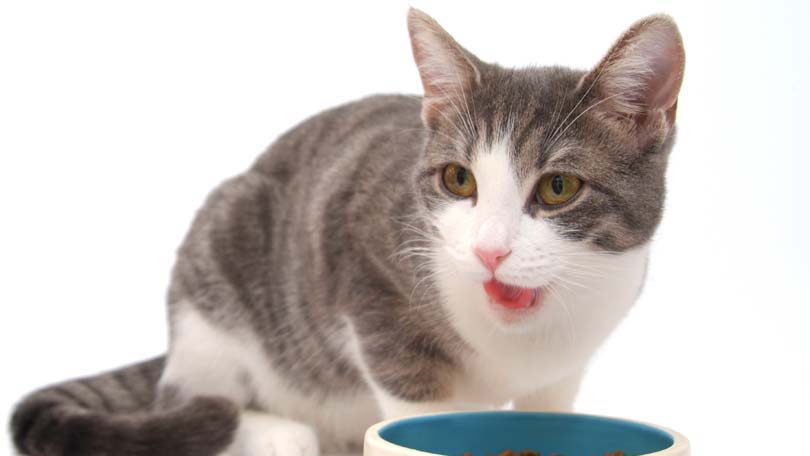
Diet is one of the most important issues facing you and your cat. It is essential to remember that cats are carnivores, and their bodies are designed to break down raw meats and all that comes with it. Even though the average domestic feline is by no means living in the wild, his body remains programmed to digest meat.
There are several varying opinions out there regarding the type of diet cats should maintain. These diets include all canned food, raw food diets, dry food diets, and a diet that combines dry and canned commercial pet food. The diet that you chose may depend on personal preference, or your cat may need up choosing it for you. Cats with chronic digestive or other such illnesses may benefit most to a change in their eating habits, namely changing what they are fed. This can be an easy solution to a difficult problem, but it is ultimately your choice.
Most domesticated housecats have been introduced to a diet of commercially prepared dry kibble. Although unnatural to the feline digestive system due to its high content of carbohydrates, high number of plant proteins, and lack of water, the dry food diet is most common in the United States, with most cats tolerating it quite well. The available choices of dry cat food have increased dramatically, so finding a formula that suits your cat’s needs has become easier. If you find that your cat is experiencing problems, a change may be in order. You may also find an apparently healthy cat will thrive and even enjoy an even longer life if their diet is altered.
An all canned cat food diet is becoming more popular. Cats are an obligate carnivore, which means that they were designed to garner their nutritional needs from a mainly animal-protein diet. Cats lack the metabolic means necessary to derive nutrition from plant-based proteins. Canned foods that are specifically designed for cats have a higher quality protein, while dry foods are often heavily plant-based proteins that cats cannot digest. In the wild, your cat would be eating a high protein, high-moisture content, meat-based diet, with a moderate level of fat and with only approximately 3-5 percent of her diet consisting of carbohydrates. Canned foods do not contain the ultra high levels of carbohydrates that are found in dry foods, which cats do not need nor can they tolerate.
Canned foods also contain high amounts of water, which cats are meant to ingest with their meals. Most wild prey contains 75% water, making canned foods much more natural to the cat. One of the most common ailments that cats suffer from are kidney and bladder problems. A high water content diet can help alleviate these problems.
A practice that is gaining popularity among cat owners is providing an all raw meat diet for their cats. This can be accomplished by purchasing a pre-made version of this product, or by making the food at home. Raw meat diets are similar to the nutritional needs supplied by canned foods, yet they contain lower levels of the toxins from grain that commercial dry and canned foods have, as well as less bacteria. While raw meat does can bacteria, cats enjoy a much shorter transit time through the intestines, so bacteria does not have time to grow and multiply there.
Whether you engage in making the product yourself, or buying a prepared raw food, it is important to do your homework. Cats cannot thrive on meat alone, so be sure to add supplements or bone meal to enhance calcium. There are a number of recipes that your cat will enjoy. If you decide to buy a pre-made product, be sure to inspect the ingredients, allowing for no more than 10% vegetable matter. Also be aware of what the meat source is, as organs such as liver do not contain the necessary nutritional sustenance that cats need.
If you are experiencing problems with your cat, consult your veterinarian, who may be able to help you decide on an adequate diet for your feline companion. Experimenting with different diets may also be of great help in determining which is best for your cat.
